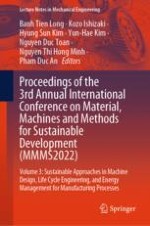This book presents selected, peer-reviewed proceedings of the 3rd International Conference on Material, Machines and Methods for Sustainable Development (MMMS2022), held in the city of Can Tho, Vietnam, from 10 to 13 November 2022. The purpose of the conference is to explore and ensure an understanding of the critical aspects contributing to sustainable development with a focus on advanced mechanical engineering, automation, materials, machines and methods. The contributions published in this book come from authors representing universities, research institutes and industrial companies and reflect the results of a very broad spectrum of research, from micro- and nanoscale materials design and processing, to mechanical engineering technology in industry. Many of the contributions selected for these proceedings focus on materials modeling, eco-material processes and mechanical manufacturing.
Volume 3 of this book focuses on topics dedicated to sustainable approaches in machine design, life cycle engineering, and energy management for manufacturing processes.
